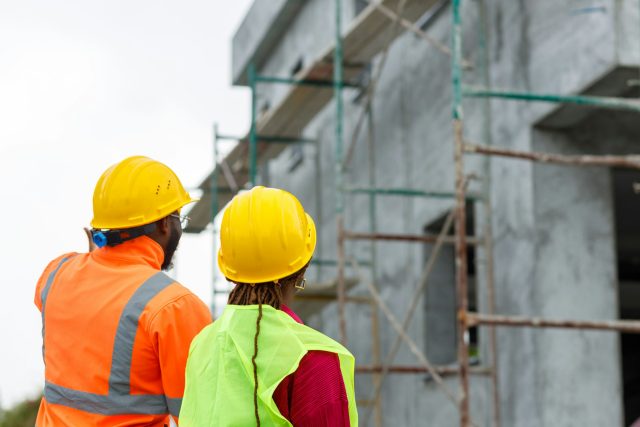
The construction industry is constantly changing, and 2025 is shaping up to be another exciting year of growth and innovation. From smarter building methods to sustainable materials, new trends are improving the way projects are managed and delivered.
These changes can keep up with technology while also meeting rising demands for efficiency, safety, and eco-friendly practices. From the use of advanced digital tools to modular construction, the latest trends are helping companies save time and cut costs. They’re also helping to create structures that are better for people and the planet.
In this article, we’ll explore the top construction trends to watch in 2025, giving you a clear picture of what’s shaping the industry and how you can benefit from it. For contractors, architects, and developers, staying ahead of these developments is no longer optional; they need to stay competitive.
1. Recycled Aggregates Reduce Waste in Road and Site Surfacing
Recycled aggregates are also becoming a key part of construction, especially in road building and site surfacing. Instead of relying only on new raw materials, builders are reusing crushed concrete, bricks, and asphalt from old projects.
This reduces waste going to landfills and lowers the demand for natural resources like stone and gravel. Plus, recycled aggregates are strong, cost-effective, and environmentally friendly, making them a smart choice for modern projects.
By using these materials, especially from reliable suppliers like Storefield Aggregates, construction companies can cut costs and reduce their carbon footprint. They can also support sustainable practices while still delivering high-quality, durable surfaces.
2. Innovative Surfacing Techniques Cut Down Project Timelines
In 2025, construction projects are moving faster thanks to new surfacing techniques. Methods like 3D-printed concrete, self-healing asphalt, and prefabricated surface panels are helping teams complete work in less time without compromising quality.
These innovations make roads and exterior finishes more durable while reducing the need for frequent repairs. Faster installation also means less disruption for surrounding communities and lower labour costs for developers.
By choosing trusted contractors like LSL Surfacing and combining advanced materials with modern technology, construction companies can deliver their projects quickly and efficiently, making it a major trend to watch in the construction industry this year.
3. Smart Buildings with Integrated IoT Technology
Smart buildings are set to define 2025, with IoT (Internet of Things) technology making structures safer, more efficient, and much easier to manage. There are now sensors and connected devices that can monitor energy use, lighting, temperature, and even air quality in real time.
Another key application is fire door management, where IoT systems can be used to track the status of fire doors to improve safety and compliance. These smart solutions reduce maintenance costs and extend equipment life. They also create more comfortable spaces for occupants.
As technology advances, IoT integration is no longer a luxury; it’s becoming a standard feature in modern construction projects worldwide.
4. The Rise of Modular and Prefabricated Structures
Modular and prefabricated construction is becoming increasingly popular in 2025 because it saves time and reduces waste. Instead of building everything on-site, parts of a structure are made in factories and then assembled like building blocks at the location.
This approach improves quality control, lowers costs, and shortens project timelines. It’s especially useful for housing, offices, and even hospitals that need to be completed quickly.
With growing demand for affordable and efficient construction, modular and prefabricated structures are proving to be a practical solution that balances speed and cost in today’s building industry.
5. Sustainable Building Materials Take Centre Stage
In 2025, construction companies are prioritising sustainability. Builders are turning to eco-friendly materials like recycled steel, bamboo, reclaimed wood, and low-carbon concrete to reduce environmental impact. These materials not only cut down on waste but also improve energy efficiency and durability in buildings. With many service providers like Oaktree Electrical offering full-service efficiency electrical installations and more, ensuring sustainability is way easier than it used to be.
With stricter regulations and growing awareness about climate change, sustainable choices are becoming the norm rather than the exception. Developers and clients alike are looking for greener options that balance cost and performance while also showing their environmental responsibility, which is why it’s a leading trend this year.
6. AI and Automation Streamline Construction Processes
Artificial Intelligence (AI) and automation are making construction faster, smarter, and more accurate this year. From project planning to on-site work, these technologies help reduce human error and improve efficiency.
AI tools can predict risks and manage schedules while also optimising material usage, saving both time and money. Automation in the form of robotics and drones is also being used for tasks like surveying land, laying bricks, and monitoring progress in real time.
Overall, AI and automation are taking over many repetitive or dangerous jobs. This improves safety on construction sites and allows workers to focus on higher-value tasks.
7. 3D Printing Expands from Prototypes to Real Projects
3D printing is moving beyond small-scale prototypes and into full construction projects in 2025. Using special printers, builders can create walls, bridges, and even entire structures layer by layer with concrete or other materials.
This method reduces waste, speeds up building times, and allows for highly customised designs. It’s also more cost-effective for affordable housing and emergency shelters.
With growing advancements, 3D printing is proving that it’s not just an experimental tool but a great solution for real-world construction needs, making it one of the most exciting innovations in the industry today.
8. Aggregates Used in Modern Drainage Solutions
Aggregates are playing a bigger role in modern drainage systems in 2025. Materials like gravel, crushed stone, and recycled aggregates are being used to manage rainwater, reduce flooding, and improve soil stability.
They allow water to flow through easily while filtering out debris, making them ideal for sustainable urban drainage systems. Using aggregates in drainage helps reduce pressure on traditional pipes and sewers, lowering the risk of blockages.
This approach is cost-effective and environmentally friendly, making it a smart choice for small projects and large-scale infrastructure in today’s construction industry.
To Sum Up
The construction industry in 2025 is being shaped by innovation, sustainability, and smarter ways of building. From eco-friendly materials and recycled aggregates to AI, IoT, and 3D printing, these trends are helping projects become faster, safer, and more cost-effective.
Staying informed about these changes is essential for builders, developers, and clients who want to stay competitive and future-ready. By embracing these new methods and technologies, the industry can meet today’s demands and build a stronger, greener future for generations to come.




